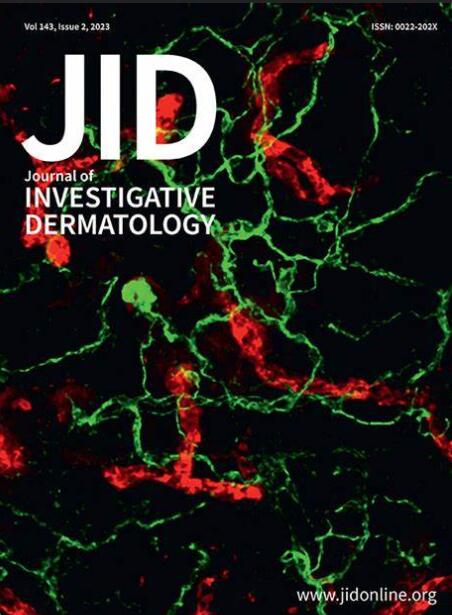确定治疗瘢痕疙瘩的潜在药物靶点:孟德尔随机研究
IF 5.7
2区 医学
Q1 DERMATOLOGY
引用次数: 0
摘要
本文章由计算机程序翻译,如有差异,请以英文原文为准。
Identifying Potential Drug Targets for Keloid: A Mendelian Randomization Study
Keloids are a skin fibrosis disease characterized by troublesome symptoms, a varying degree of recurrence and inevitable side effects from treatments. Thus, identifying their drug targets is necessary. A 2-sample Mendelian randomization analysis was conducted using proteins from the intersection of the deCODE database and "The Druggable Genome and Support for Target Identification and Validation in Drug Development" as the exposure variable. The outcome variable was based on recently published GWAS of keloids. Summary data–based Mendelian randomization and colocalization analysis was employed to distinguish pleiotropy from linkage. Candidate targets underwent drug target analysis. The primary findings were validated through single-cell RNA-sequencing data, Western Blot and immunofluorescence staining on keloids. Seven proteins were identified as potential drug targets for keloids. Among these proteins, Hedgehog-interacting protein, neurotrimin [NTM], KLKB1, and CRIPTO showed positive correlations with keloids, while PLXNC1, SCG3 and PDGFD exhibited negative correlations. Combined with the single-cell RNA-sequencing data, NTM, PLXNC1, and PDGFD were found highly expressed in the fibroblasts. NTM showed a significant increase in keloids as compared to normal scars. In accordance with the analysis, higher levels of protein expression of NTM in keloids compared to normal skin was observed. The identified proteins may be appealing drug targets for keloids treatment with a special emphasis on NTM.
求助全文
通过发布文献求助,成功后即可免费获取论文全文。
去求助
来源期刊
CiteScore
8.70
自引率
4.60%
发文量
1610
审稿时长
2 months
期刊介绍:
Journal of Investigative Dermatology (JID) publishes reports describing original research on all aspects of cutaneous biology and skin disease. Topics include biochemistry, biophysics, carcinogenesis, cell regulation, clinical research, development, embryology, epidemiology and other population-based research, extracellular matrix, genetics, immunology, melanocyte biology, microbiology, molecular and cell biology, pathology, percutaneous absorption, pharmacology, photobiology, physiology, skin structure, and wound healing

 求助内容:
求助内容: 应助结果提醒方式:
应助结果提醒方式:


